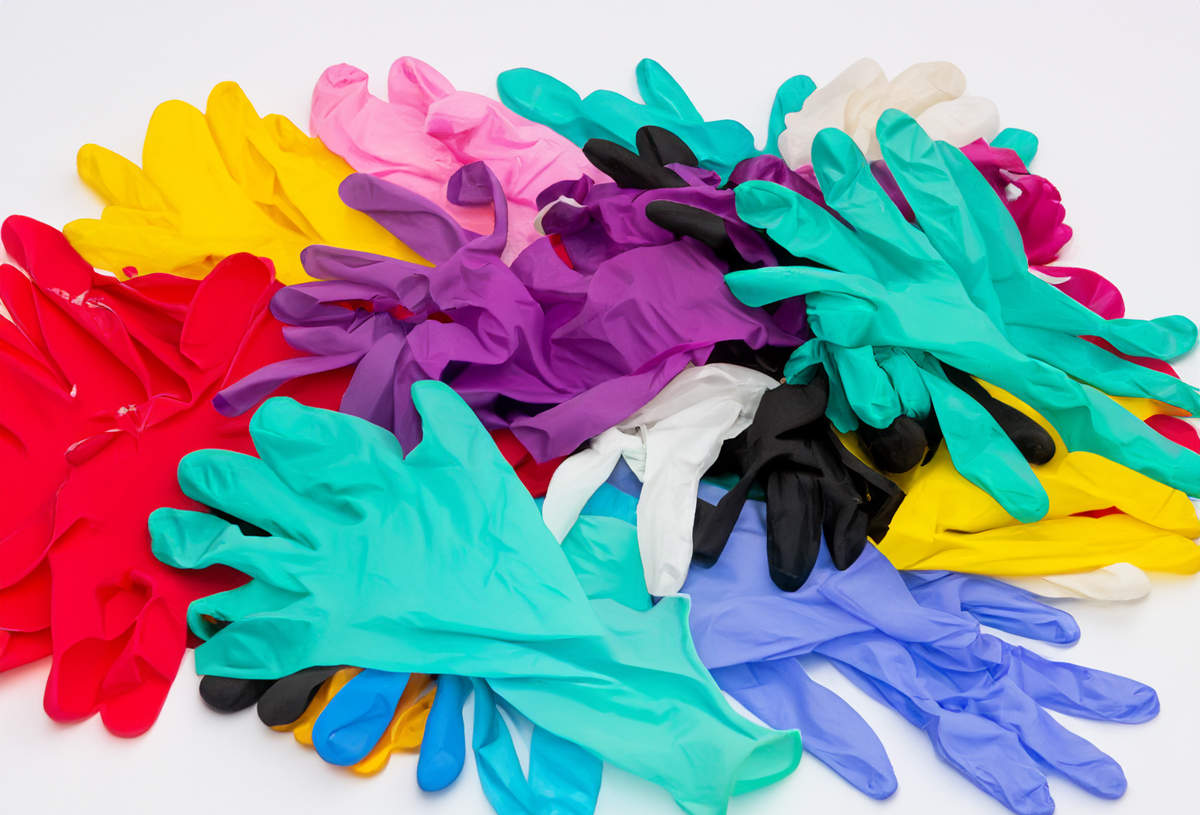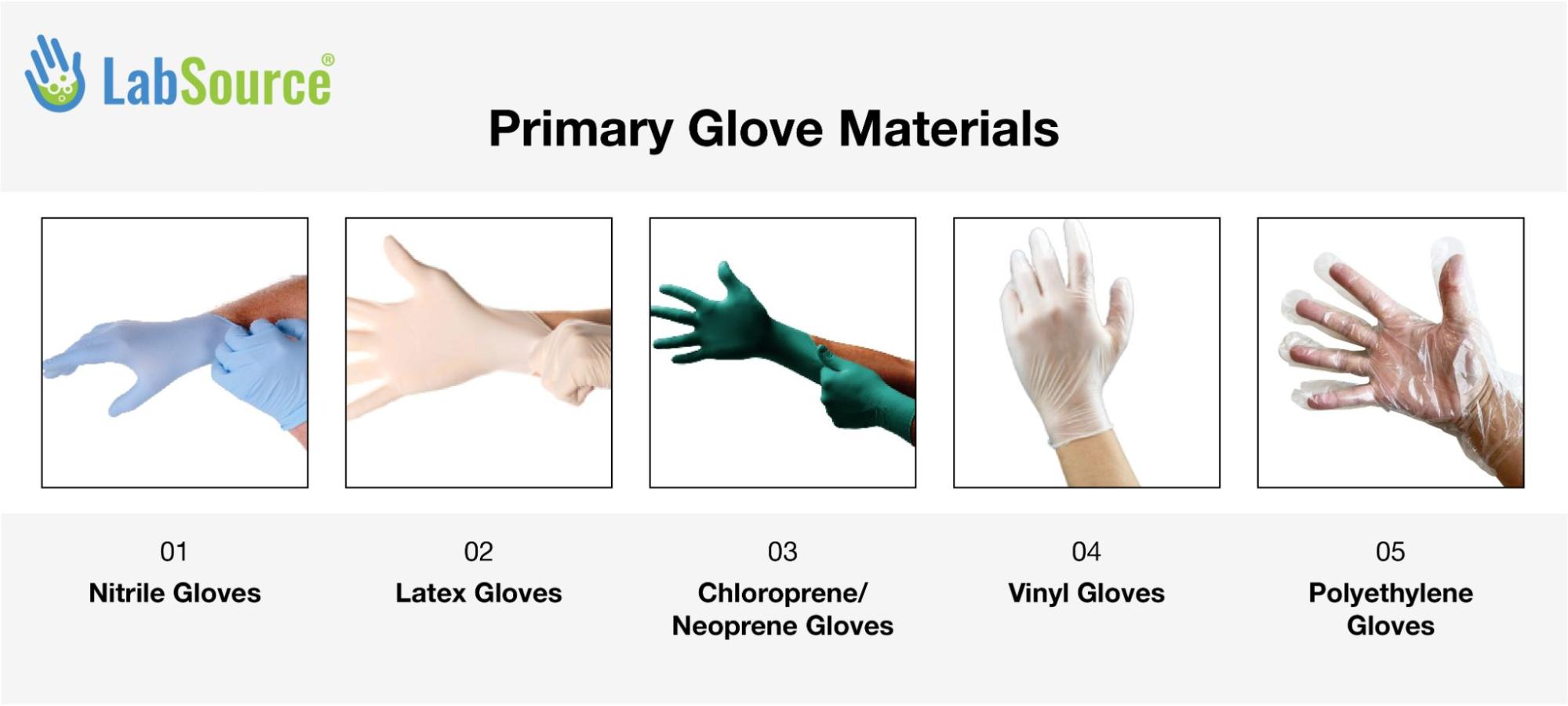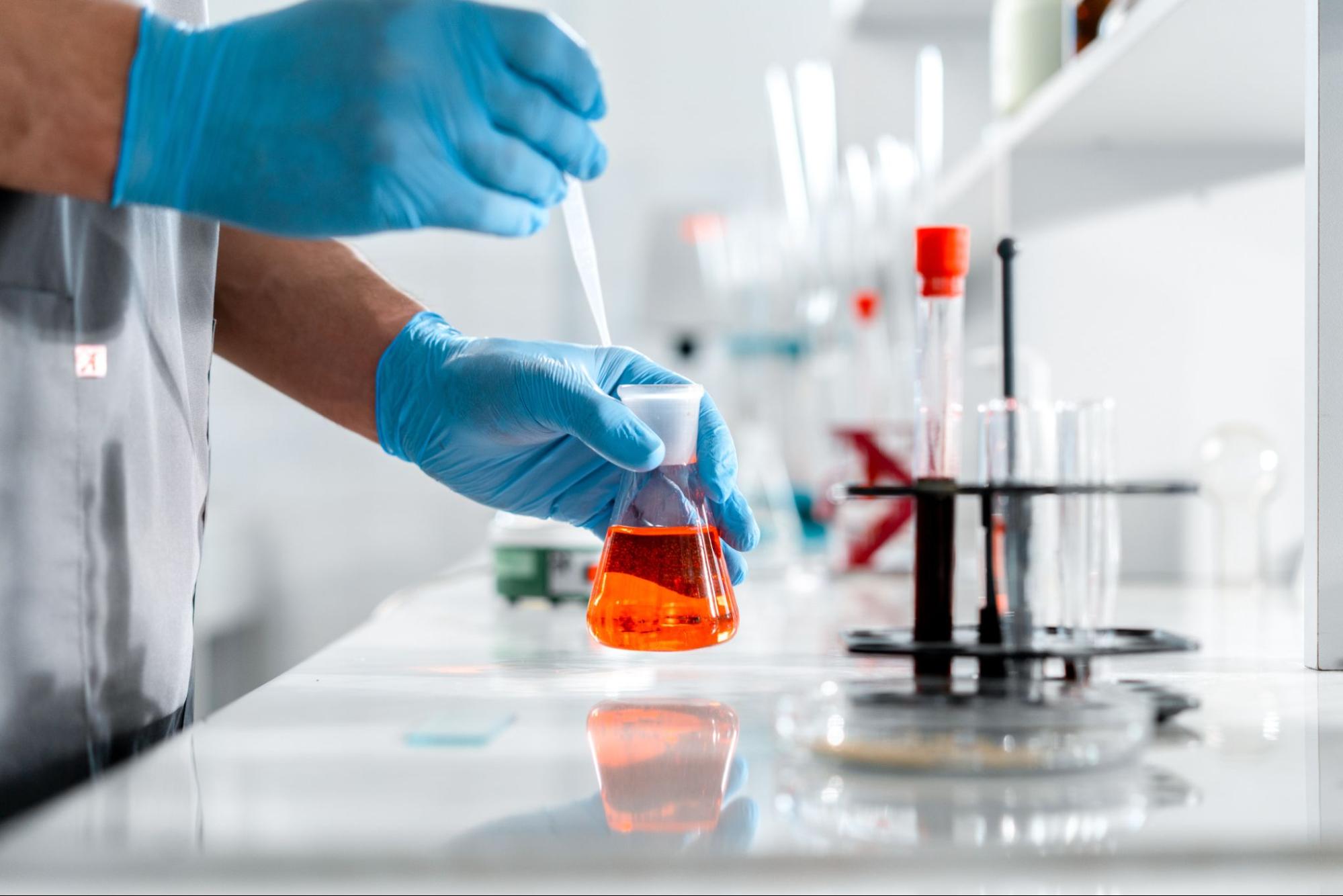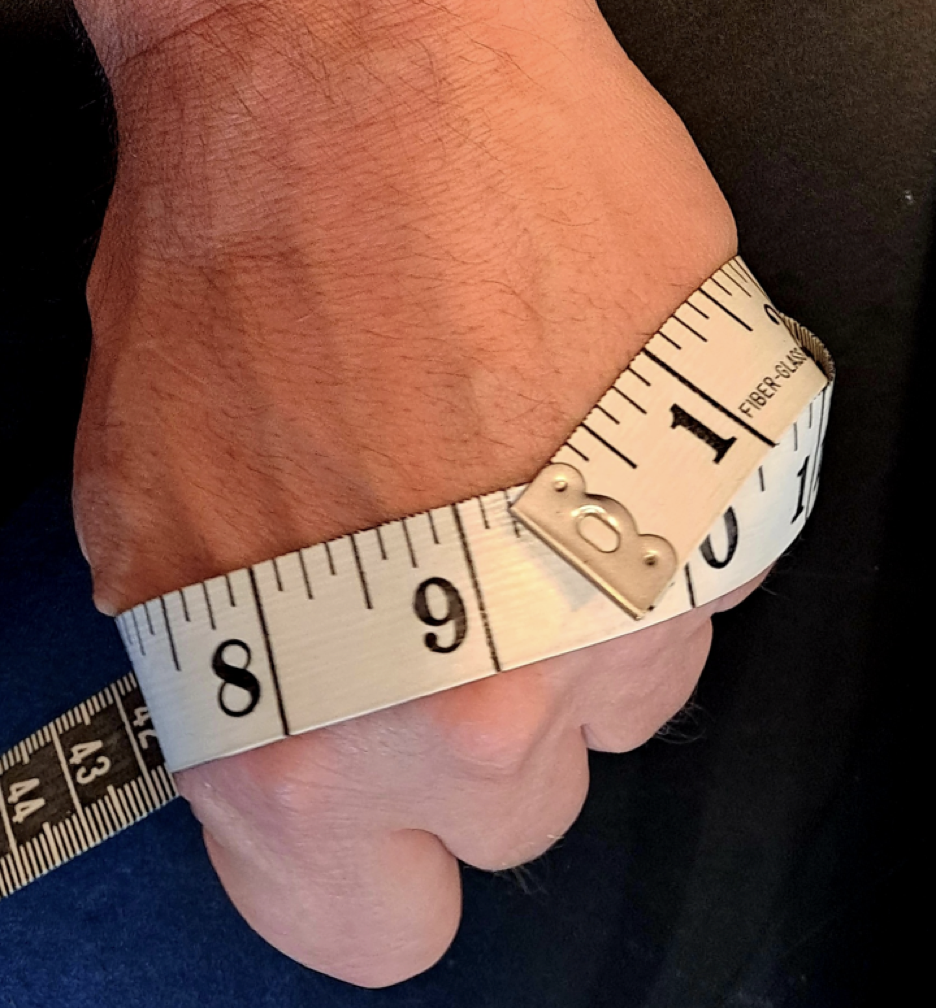Choosing the Perfect Fit: Don't Settle for Less, Even at a Lower Price.
As a vital line of defense against harmful substances and diseases, disposable gloves are frequently misunderstood. With an overwhelming variety to choose from, customers are often seeking the lowest price on the wrong glove!
When shopping for disposable gloves, take time exploring the options in the market. Don't rush into a purchase just because it matches your budget; make sure it's the right glove for your project.
For over 30 years, LabSource has helped customers navigate the maze of materials, grades, colors, strength, fit, comfort, dexterity, brands, etc. Use the guide below to find the right glove at the right price.


Nitrile Gloves
Nitrile is the most cost-effective, versatile glove for general lab and industrial applications. While not as elastic as latex, fit and dexterity are continuously improving along with superb resistance to petroleum based oils and fuels. Also provides excellent resistance to puncture, and is easier to spot tears prior to handling dangerous materials. Also tolerates higher temps than latex and prevents latex induced allergies.
View our Best-Selling Nitrile GlovesNitrile gloves are an excellent choice for customers seeking latex-free superior durability with minimal allergies, and a comfortable fit for various applications.
Latex Gloves
Latex is the ideal choice for medical or precision applications that require a high level of form-fitting, tactile sensitivity, and effective protection against bloodborne pathogens. If you have concerns about allergies or need protection against harsh chemicals, consider nitrile gloves as an alternative.
View our Best-Selling Latex GlovesLatex gloves are a smart choice due to their form-fitting characteristics, elasticity, and effective protection for various tasks.
Neoprene Gloves
Neoprene gloves offer the same rigorous fit and dexterity as latex for highly precise applications, including medical procedures, but with reduced allergy risks. They also withstand many acids, peroxides, toxic chemicals, and corrosive materials. However, neoprene does not hold up well against certain aromatic hydrocarbons and comes at a higher cost compared to nitrile and latex.
View our Best-Selling Neoprene GlovesNeoprene gloves are highly resistant to chemicals, oils, and a wide array of corrosive substances, making them an excellent choice for various industrial and laboratory applications.
Vinyl Gloves
Cost-effective gloves suitable for basic food and industrial applications where form-fitting is not necessary, such as handling oils, fats, resins, and greases. They offer good resistance to abrasions, flexibility in cold temperatures, anti-static properties, and pose no latex allergy concerns. However, they are not suitable for applications that demand protection against hazardous materials.
View our Best-Selling Vinyl GlovesVinyl gloves are valued for their cost-effectiveness, ease of wearing, and latex-free composition, making them a practical choice for a wide range of applications.
Polyethylene Gloves
Polyethylene gloves are disposable, affordable and offer lightweight comfort. They are a cost-effective choice for tasks that require frequent glove changes and are suitable for short-term application, such as food handling.

Glove Grades
1. Medical Grade (Exam):
Medical grade gloves are precision-made to meet strict healthcare standards, providing reliable barrier protection and dexterity for healthcare and lab professionals in infection control and medical procedures.
Minimum AQL is 2.5- see Terminology below for more information.
2. Non-Medical Grade (Industrial):
Industrial grade gloves are designed for use in various non-medical applications, offering durable hand protection in industrial and commercial settings.
Fully-textured Nitrile gloves
3. FDA Approved:
For contact with food and beverages, meeting standards of FDA Title 21 CFR Part 177.
View our Best-Selling FDA Approved Gloves4. Fentanyl Approved:
Tested by independent labs to ensure no breakthrough using ASTM 6978-19 (Standard within the 240 minute test for permeation). UV/VIS Absorption Spectrometry is used to measure absorption of Fentanyl.
View our Best-Selling Gloves for Fentanyl Safety5. Chemo Gloves:
Medical gloves approved for chemotherapy. Approved gloves must be tested with nine chemotherapy drugs as required in the American Society for Testing and Materials (ASTM) Standard D6978-05 (Standard Practice for Assessment of Resistance of Medical Gloves to Permeation by Chemotherapy Glove).
View our Best-Selling Gloves for Chemotherapy6. Surgical Gloves:
Surgical - Sterile, Minimum AQL of 1.5 and approved for surgical use.
View our Best-Selling Surgical GlovesSizes & Packaging
Glove Sizing

Wrap a measuring tape around the widest part of your dominant hand, just below the knuckle and excluding your thumb
Glove Terminology
Glove Strength
Applications/Industries
According to the Occupational Safety & Health Administration (OSHA), 70.9% percent of hand and arm injuries could have been prevented with personal protective equipment, specifically safety gloves. Ironically, however, 70% of workers don’t wear hand protection.
About LabSource
Over 3,000,000,000 disposable gloves sold since LabSource’s founding in 1989! Trustworthy, expert advice plus stock on over 80 disposable gloves including the value-leading American Health and Safety Brand.